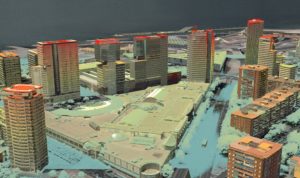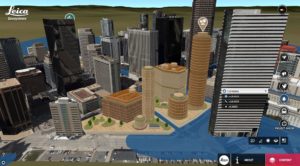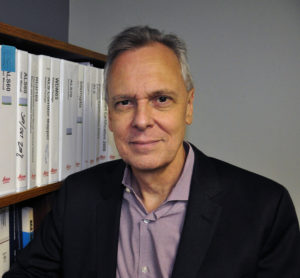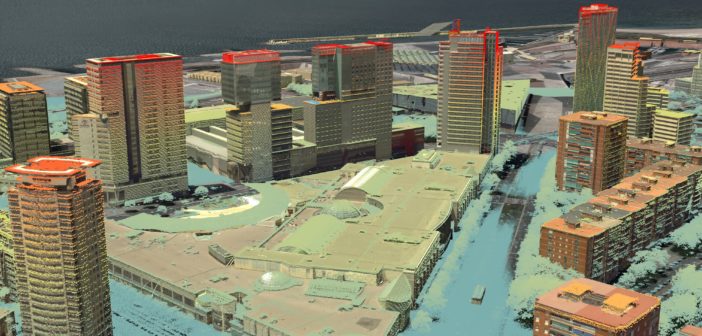A 3D city model enables city councils and urban planners to go beyond traditional city development and share their vision with their citizens and stakeholders. In this interview, Ron Roth, product manager for airborne topographic LiDAR sensors at Hexagon Geosystems in Maryland, United States, explains how to create 3D city models with the Leica CityMapper and Leica HxMap, and why it is beneficial.
Ron, what are the advantages of 3D city modelling?
3D city models allow the user to make informed decisions based on visual or quantitative data. Having meshes and models available promotes efficient vetting of proposed solutions to urban maintenance and development challenges. 3D city models allow accurate analyses of issues and simplify the evaluation of solution alternatives, offering a common base map for all stakeholders. Base data only needs to be collected once and can be used in many analytical tasks, thus reducing costs by not having to re-collect geospatial data each time a different analysis is needed. In other words, it introduces a smarter workflow for urban management.
Could you outline a few examples of how the data is used?
During urban development, much consideration is given to preserving sun exposure, because natural daylight has a positive effect on people’s lives. 3D city modelling applications allows the study of sunlight and shadows thus, showing the effects of the proposed development and if necessary, suggesting appropriate action that can be taken. The city model provides underlying information for each object, so-called smart 3D objects. The user simply needs to select the respective point at a location and the respective information is exposed. By connecting GIS Layers any person can access relevant data, may it be for tax, risk or other analysis. It merely depends on which data and subject matters have been previously tied to the city model. City visualisation enables the users to rapidly explore the model at any desired location and detail-level. By using streaming services, the visualisations are even available on mobile devices and therefore, can serve as a personal or vehicle navigation backdrop.
 When would you recommend using such an application?
When would you recommend using such an application?
3D city modelling can be used for several purposes like urban mapping and risk management. The basic models can support asset management and emergency response planning but also add the possibility for a pedestrian-eye view. This is especially beneficial to create enjoyable experiences for tourists. Being able to proactively manage general risks, like flood risk, or more specific ones, such as security “viewsheds”, can be extremely valuable. Moreover, the application can be a helpful tool to see how a city has developed or will transform over time. The mesh viualization output makes the changes readily visible. However, the analysis is not limited to the city structures alone, but can be used to evaluate the environment such as, wind patterns, solar loading and storm water drainage. These are the areas where the availability of true 3D building models is an enabling technology. Transportation planning is fundamental in every city and has traditionally been analysed in 2D. However, the 3D city modelling application further enhances the analysis and can improve quality of live for many residents.
What features, and information does the end-user application provide?
The end user application presents or analyzes georeferenced information and can potentially visualise both above-ground and underground infrastructure. While the Leica CityMapper delivers the above-ground base layer, the user can add as much or little below-ground information as needed, gathered from existing design files of from leading-edge tools such as mobile ground-penetrating radar (GPR) systems. Such data can include types, sizes and locations of water supply, waste lines, gas mains, storm water drains as well as subways. These different features can be turned on or off in the visualisation, at will.
 How was the raw data obtained and extracted into the end-user application?
How was the raw data obtained and extracted into the end-user application?
Leica RealCity is the airborne mapping solution specifically designed for smart city applications such as 3D visualization and modelling. First, the data needs to be captured with the Leica CityMapper, the world’s first hybrid imaging and LiDAR airborne sensor. A single flythrough is enough, as the Leica CityMapper collects oblique and nadir imagery and LiDAR point clouds all at once. This is not only more efficient during the flight, but data is easier to process and visualise because of the simultaneous collection. The image and LiDAR data reflect all the same state of the city including cars or construction sites, which ultimately increases the robustness of the unified data set. After the data collection, the imagery and LiDAR raw data are processed with Leica HxMap, the unified high-performance workflow that turns airborne data into a geospatial base layer for the end user application. Leica HxMap enables the use of a single processing application, ensuring an effective and efficient work process.

Ron Roth
Leica Geosystems, part of Hexagon
Airborne Topographic LiDAR Product Manager














